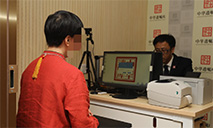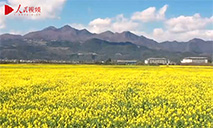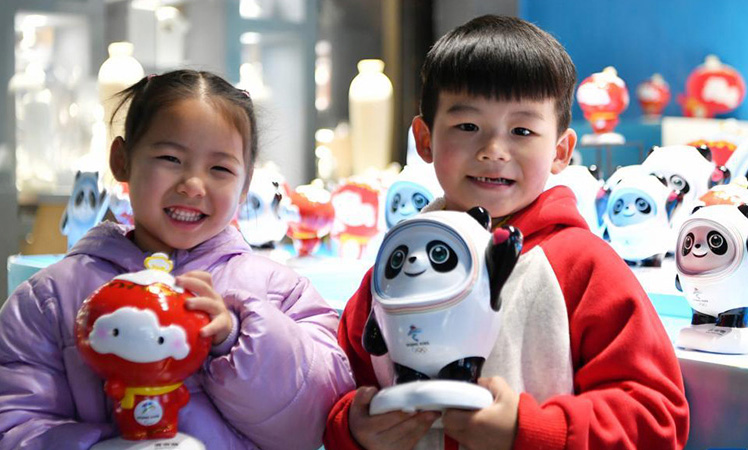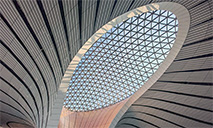Feature: Australian scientist working on jigsaw puzzle of earth with Chinese researchers
CANBERRA, March 27 (Xinhua) -- Australian scientist Sue O'Reilly might have known about the geostructure of China better than many Chinese.
During the past 40 years, the professor from Macquarie University has been committed to research collaborations in geoscience with Chinese universities and institutes during her trips to China.
On Thursday, O'Reilly received the International Science and Technology Cooperation Award for her contribution to the development of Chinese science and exchanges between the Chinese and international geoscience community.
"This is by far the most emotional moment I've ever had in my Chinese collaborations," said the 76-year-old Fellow of the Australian Academy of Science in an interview with Xinhua after the awarding ceremony. "It is just amazing that 30 or 40 years of doing wonderful work with wonderful Chinese colleagues has been so important that it's recognized by the Chinese government."
The International Science and Technology Cooperation Award of the People's Republic of China is a state-level annual award established by the State Council of China in 1994, which is conferred on foreign experts or organizations that have made important contributions to China's science and technology development.
"This award is indeed proof that science collaboration is a powerful way to build lasting international bonds and ongoing cooperation in an increasingly complex world that we all share, and we have a responsibility to shape for the future," said O'Reilly.
She first traveled to China in 1982. At that time she finished her PhD in volcanic rocks around New South Wales, and found that Australia was not the right place to take her research any further. So she cast her sight to China.
The life-long contacts she then established came into fruition with an invitation to a conference in Beijing in 1992. She then visited the Fangshan basalt and xenoliths in Luhe, Nanjing of east China's Jiangsu province.
In the following years, Professor O'Reilly worked with Chinese researchers. They conducted research in China, investigated the volcanic geology of South Australia, and compared the four-dimensional rock evolution of eastern China with eastern Australia.
"We had a vision to understand how the earth works with Chinese colleagues. I won't pretend it's all been easy. We had some very hard field trips," she said.
In 2002, she visited Hannuoba of north China's Hebei province. The road was slippery when they rode on a tractor to go to the site after the rain, but the happiness for exploration was written on her smiling face in the photo.
Throughout the years she witnessed great changes in China.
"When I first went to China, there were almost no motor cars," she told Xinhua, recalling the scene when they sat in a black car in a sea of bikes.
Back in 1982, not long after China had opened up to the world and to new science, people in the laboratories had very little equipment, and many were looking at foreign experts like O'Reilly to "guide them as to what was important for the future."
"The outcome of that has been that China has grown scientifically so much that we now go to use laboratories in China because they are so excellent, and I received so much support in China," she added.
The professor said one of her greatest memories was being able to assist the young Chinese to start publishing in the international literature, build their world-class laboratories and research programs and bring up the next generation in an international environment of science.
As a visiting professor of the China University of Geosciences and concurrent professor of the Nanjing University, she not only helped with the training of scientific and technological talents, but also initiated many geological surveys and laboratory cooperation between China and Australia.
She visited the Chinese Academy of Sciences in 2013, where she guided Chinese researchers to carry out laboratory work and discuss test data. The young scientists she trained have become the backbone of many key laboratories in China.
She also planned a China-Australia joint research center to promote in-depth cooperation between the two countries.
Not sure how many Chinese researchers she had worked with in the past decades, O'Reilly noted that they had about 200 scientists across China and Australia at the peak of the work.
"It's been very satisfying to see the young scientists at that time now become the leaders and mentoring their own young next generation," she added, saying they had made achievements that are only possible under the cooperation between Chinese and Australian scientists.
"Science across national borders is a better way to make a better world for all and for a more sustainable future, for our planet and society," she said. "I consider this award as a testament to China-Australia scientific cooperation and a shared vision for a future."
She expected to see more cooperation in spite of changes in political relations between the two countries.
"Science goes on, no matter what," the scientist said. "Science in China started thousands of years ago, and it is still going strong. How many political changes have there been in the world over 2,000 years?"
"Every person does a small part. It's like a jigsaw puzzle," she said. "We start putting things into place, and we have ended up with a really significant change in the way we understand the earth, and the way we do prospecting for important minerals that we're going to need for the sustainable future. It's not the end of it. People will take our work and go on from there."
Photos
 Increasingly more young adults in China register wills that include virtual assets
Increasingly more young adults in China register wills that include virtual assets Rapeseed flowers turn NW China's Luoping into picturesque spring wonderland
Rapeseed flowers turn NW China's Luoping into picturesque spring wonderland Why do people in China fall for animated characters like LinaBell and Bing Dwen Dwen?
Why do people in China fall for animated characters like LinaBell and Bing Dwen Dwen? Photo Album: architecture in Beijing merging history and modernity
Photo Album: architecture in Beijing merging history and modernity
Related Stories
Copyright © 2022 People's Daily Online. All Rights Reserved.






